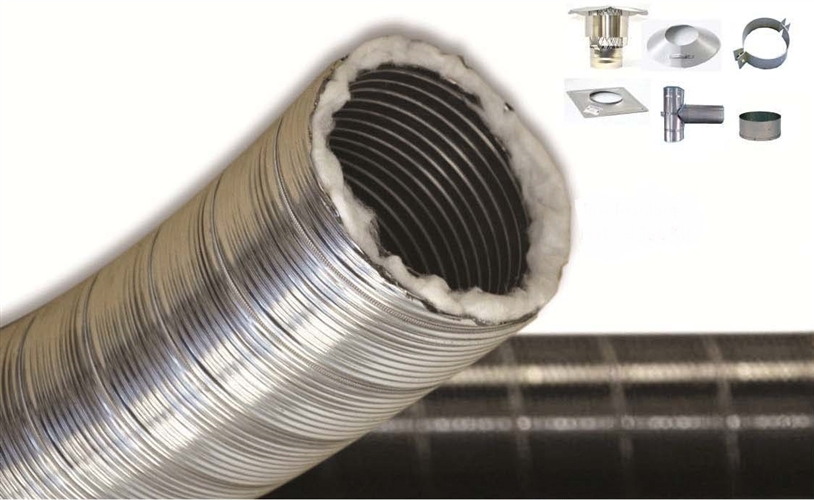During a recent chimney inspection at a home in Rockville, MD, we discovered that chimney liner needed to be replaced. The homeowner quickly asked, “So, what’s a flue?” We were glad that the homeowner asked that question. It shows that the homeowner cared enough to want to know everything that is happening with their chimney. Most people don’t give much thought to their chimneys, thinking of them as simply a low-tech invention which funnels smoke out of their homes. But in reality, a chimney is an evolved structure with several essential components that work together to move smoke and heat safely and efficiently out of your house, and one of the most important of these parts is the flue or liner. Your chimney integrity and maintenance is critical to fire safety, that is why you should always have your chimney professionally inspected and clean by your local fireplace services company.
What Is A Chimney Flue, And What Does It Do?

At one time, most chimneys were constructed without a flue liner, but because of safety concerns, most local building codes now require one to be installed. Various tests conducted in the mid-20th century showed that unlined chimneys did a poor job of protecting a structure from fires and damage. Without a flue, the heat was transferred rapidly to the surrounding wooden structure, setting them aflame in as little as a few hours. The chemicals released by combustion can act directly on the brick, stone, and mortar, causing rapid deterioration and failure of the chimney, and possibly releasing deadly carbon monoxide into the home. A flue liner also allows for the correct sizing of the chimney configuration and a proper draft, which is necessary for efficient combustion and prevention of the buildup of creosote in the chimney, which can lead to fires.
Types Of Chimney Flue Liners
There are three basic types of flue liners used today:
- Clay Tile Liners – This is the most common type because it’s inexpensive and easily available and works well in a properly maintained chimney and open fireplace. Most older homes with liners will have this type. With regular cleaning and maintenance, they can last for decades. They aren’t as effective at containing chimney fires or the chemical by-products of gas fireplaces, and they are susceptible to cracks. When significant cracking has been detected by a professional Chimney inspection, it is usually recommended that a new liner be installed rather than attempting repairs.
- Metal Liners – Usually made of either aluminum or, more commonly, stainless steel. They are very safe and durable and do a good job of protecting a chimney and lessening the need for expensive repairs. Metal liners can be constructed for almost any type of chimney and can be flexible or rigid, making for easier and less costly installation. They sometimes need to be used with insulating material for higher temperatures.
- Cast Liners – Commonly made out of cement or like material, these work well for their intended function and also contribute greatly to the structural integrity of the chimney, and are especially recommended for older chimneys that need support. They can be poured directly into the chimney creating a seamless and leak-proof lining. These can also handle higher temperatures than other liner types, something around to 2,100 degrees. That makes them better protection against chimney fires and creosote buildup. The drawback is that if they are somehow damaged, which is unlikely, it requires complete removal and replacement.
Your chimney flue is very important to the safety of your home and family, and to the useful life of your chimney. It’s a good idea to have your chimney inspected and cleaned at least once per year, especially before cold weather arrives. That way if any damage is found, you can get it repaired in order to start using your fireplace or woodstove immediately. If you are concerned if your fireplace needs to be repaired or not, here are 6 signs that you need chimney repair.
All Pro Chimney Services operates in Washington D.C., Virginia, and Maryland. Contact us today for an estimate.
